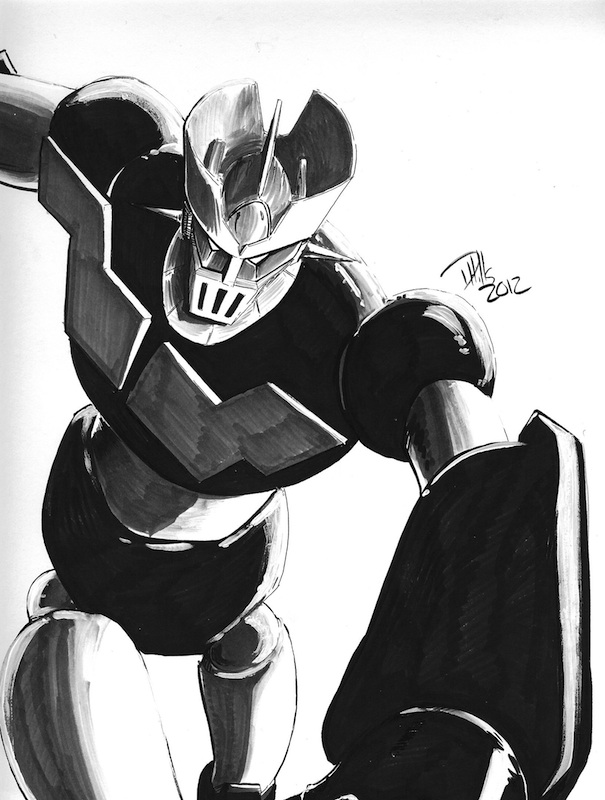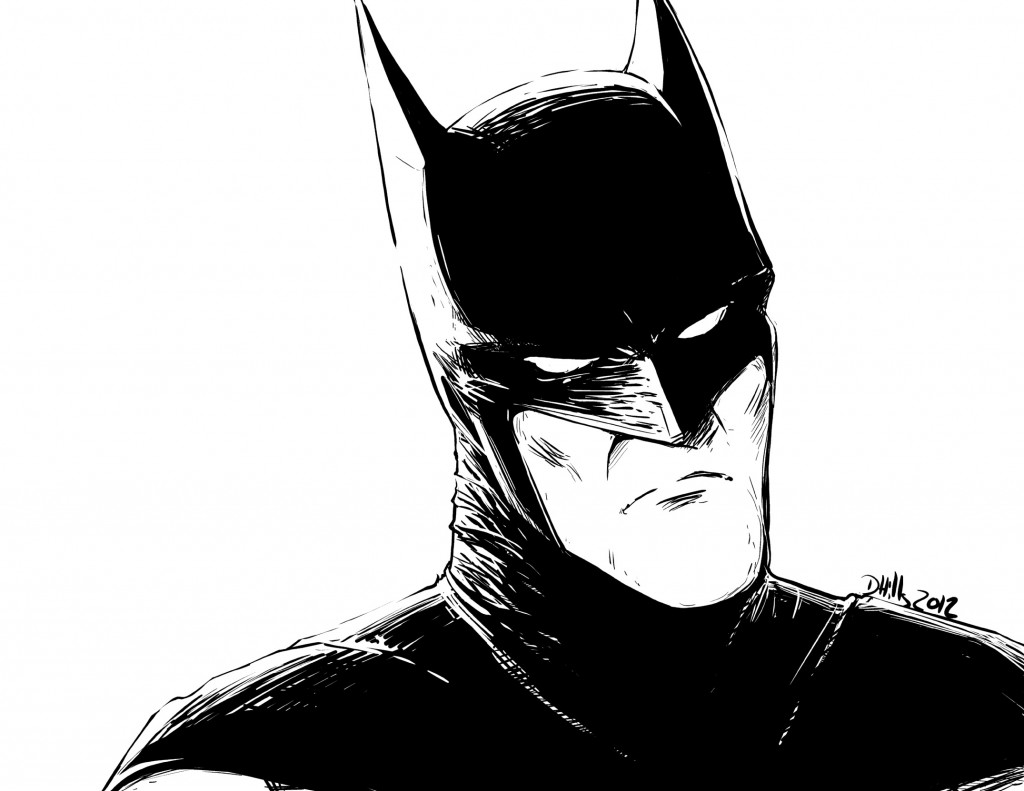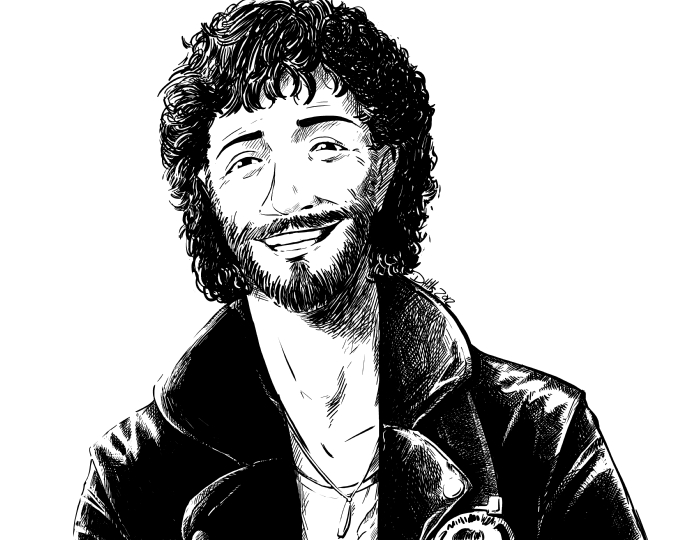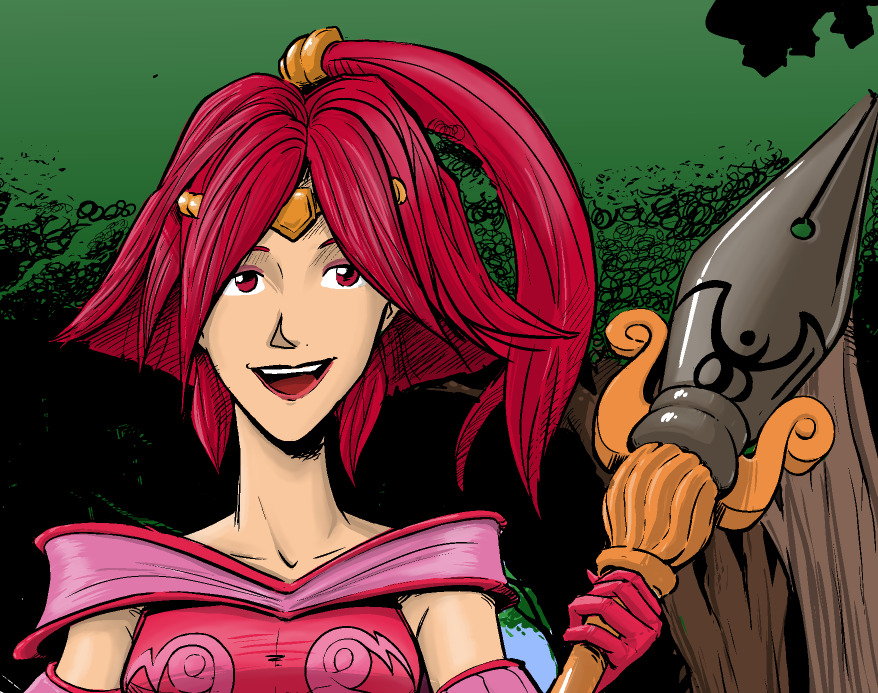How to Break Into Comics (Redux)
By Doug Hills on Feb 26, 2013 in Blog | 2 Comments
So, in the last Manga Studio webinar, I was asked by Fahim Niaz (the host) to give some advice to those of you who are looking to break into comics. I don’t know how qualified I was to offer such advice, but I gave it a shot.
Except I botched it.
Badly.
My brain froze. Nothing that I wanted to say came out of my mouth. I did manage to ramble a lot, though.
That’s not exactly advice.
I offer no excuses. However, I hope you won’t mind me telling you here what I wanted to say in the webinar. I don’t know if the advice will be any better, but it’ll at least be more coherent.
—-
So, how do you break into comics? Well, I hate to say it, but there is no one-size-fits-all approach. It’s a journey; one that’s going to be different for each of you looking to become a professional.
I thought I’d break this bit o’ advice into two categories: first, what you could do if you wanted to create and publish your own comic. And second, what you’ll have to do if you want to work for a major company.
Now, if you have a story to tell, there is no better time in this industry than right now to get it told.
The opportunities, and avenues available to get your work out to the masses has never been easier or plentiful. And, the best part is it doesn’t have to cost much of anything, outside of a computer, an art program (hopefully Manga Studio 🙂 ), and an Internet connection.
The first comics I ever seriously worked on were my own. I made two webcomics in the early part of the decade: Place Name Here, and Chibi Cheerleaders From Outer Space (which I worked on with my wife).
I did it because, simply, I *could*. I found out that people could use the Web to showcase their comics, and I ran with that. And I learned a *lot* about making comics that way. How much work it takes to not only produce the comic, but also to promote it. To let people know that it existed. And to then foster than relationship with the fans, and hopefully make that fan base grow.
And it was awesome.
These days it’s even easier to put your comic out there. You don’t even need to host your own web site to show your comic. There are many sites you can use (Drunk Duck, Comic Genesis, DeviantArt, Facebook, Tumblr, etc) to host your comic. All you need to do is create, and upload. You don’t need to know a lick of code.
Now, that doesn’t make the *whole* process of making comics easier (like any form of self-publishing, you are going to wear many hats: writer/artist, editor, promotion & marketing, etc). But, you have the means of getting the story you have in your head onto (digital) paper, and out for people to see.
There really is nothing stopping you.
—
Now, let’s say you’re not interested in telling your own story. You’d rather focus your time and energy on trying to work for one of the major comic companies. If that’s the path you want to follow, you need to roll up your sleeves and prepare to work hard.
Full disclosure: I haven’t had the opportunity to work for a major company (yet). So, you may take what I have to say in this section with a grain of salt. That said, I compiled a few things that I’ve learned over the years as I’ve attempted to get a job here and there, as well as things I’ve learned from friends of mine who have had the opportunity to work for the majors.
Anyway…
– Go to conventions and talk to artists. If there are portfolio reviews, sign up for them. Be respectful. Pay attention to what they have to say. And be prepared to take criticism, because you *will* receive some. It may be nice. It may be caustic. You may get your ego smashed into tiny pieces.
It’s all a part of the learning process. It happened to the artists you look up to. It happened to the artists *they* looked up to.
Try not to let these critiques discourage you, because that’s not the intention. As odd as it sounds, it’s supposed to encourage you, to help you grow and learn, and even to thicken your skin a little bit. Because this isn’t the last time you’ll get torn down.
Ya gotta take your lumps if you want to get better.
– The more comic jobs you get under your belt, the better. So, take a look at not only the big-name comic companies, but also the various independent comic companies out there.
Some of my best friends in the business who now work for Marvel and DC cut their teeth on many, many, independent comic projects. Having a nice resume of books and projects can be just as helpful (if not more so) as a good portfolio.
– If you do a portfolio review, keep in mind that your potential employer is looking for sequential art. They want to know how well you can tell a story. Be careful not to fill your portfolio up with nothing but pinups; that’s not exactly what they’re looking for.
– I’m going to be blunt on this one: you will get rejected at least once. More than likely, you’re going to get rejected a lot. When that happens, this is where you get to look at yourself and ask, “well, what are you going to do about it?”
You really have two options here: you can say that comics aren’t for me, and you walk away. Or, you pick yourself up, dust yourself off, and try again. I hope that when that time comes, you choose the latter.
Because, as hard as this business is to get into, and as frustrating as the whole process can be…if you can take all that, and still say to yourself that you can’t imagine doing anything else…
…well, then I think you know what to do.
—
I have one last piece of advice I feel is important, regardless of the path you take:
Have. Fun.
This can be a thankless job. It’s full of long hours, insane deadlines, anger, frustration, sweat, tears…and, hell, I’ll throw in blood just to be on the safe side.
But I hope you never *ever* lose sight of the fact that this is one of the best gigs out there. You’re drawing comics.
You’re either showing the world these fantastic characters and creatures you’ve created out of the ether of your imagination, or you’re living your dream of drawing your favorite superhero for a living. Or, maybe it’s something in between.
And I promise you that you’ll make some fantastic friends as you go on this journey. I’ve made so many friends between peers and fans and have had so much fun in the twelve years I’ve devoted to drawing pictures and words. This couldn’t have happened if I didn’t take the chance to follow this crazy dream.
So, I hope that as you take this journey, you never lose sight of why it is you’re doing this.
No matter how many bumps and roadblocks you may run into.
No matter how often you’ll say to yourself, “why am I doing this to myself?”
No matter how many people say, “you’re wasting your time.”
Or, “you’re not good enough.”
Or, “you’ll never make it.”
I hope you never lose focus, and you keep following that crazy dream.
And I really, *truly* hope you always have fun doing it.






